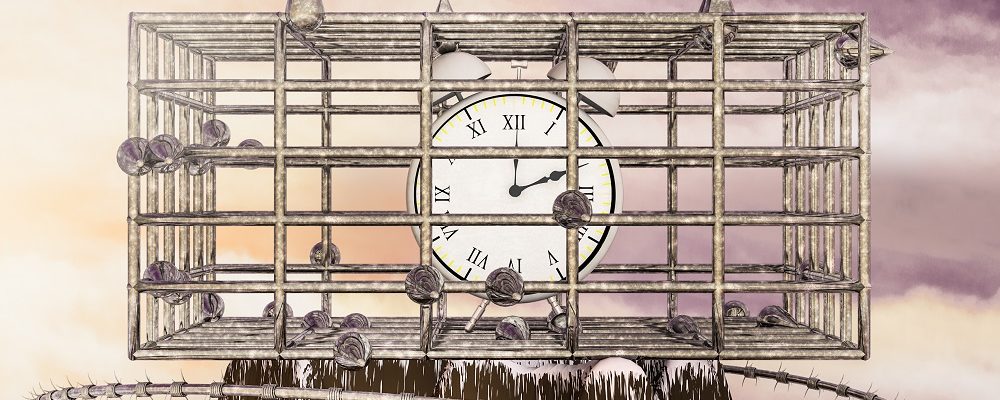Chronic procrastination is on a sharp rise and linked to a clutch of serious health concerns, according to a recent column at a leading website on developments in the academic world. (University Affairs, 28 October 2020)
In the piece, writer Kerry Banks notes that in the 1970s, only around 5% of people described themselves in surveys as chronic procrastinators. Today, however, the figure is around 20%.
To highlight the gravity of the issue, Banks quotes DePaul University, Chicago, psychology professor Joseph Ferrari, who notes: “It’s a maladaptive lifestyle. [Chronic procrastinators] do it at home, school or work, and in relationships or with responsibilities. Let’s put that 20% figure in perspective. It’s higher than the number of people who suffer from substance abuse, alcoholism or depression, which are all considered serious disorders.”
Banks also cites two pieces of relevant research from Sheffield University psychologist Fuschia Sirois. In a 2015 study of 800 US and Canadian citizens, Sirois found that ‘trait procrastination’ – a tendency to delay important tasks despite the negative consequences – was linked to instances of hypertension and cardiovascular disease.
In a further study, Sirois found that “students who scored high on a measure of chronic procrastination reported a greater number of acute health problems, such as headaches, muscle aches and strains, digestive issues, and flus and colds”.
In Sirois’ view, the foundation of the problem is that chronic procrastinators “get caught in a cycle of negative self-talk and can be very self-critical”, leading to feelings of guilt and shame. That guilt then “feeds back into the negative emotions that led them to procrastinate in the first place, thus fuelling a vicious circle”.
That tallies with a 2007 review of almost 800 studies on procrastination, which pinpointed four, underlying character markers:
- low self-confidence;
- task aversiveness;
- high degrees of distractibility and impulsiveness, and
- an inability to set realistic and immediate goals.
Amid the pandemic, even the most dedicated workers will be suffering from overwhelm, which could affect their ability to prioritise, schedule or complete tasks – potentially leading to critical self-talk and then procrastination. What can leaders do ensure they spot the warning signs and help staff out of this malaise?
The Institute of Leadership & Management’s head of research, policy and standards Kate Cooper says: “Most of us understand the basic law of procrastination, and are aware that it persists in organisations at a low level for much of the time. So we will only know whether people are procrastinating more than usual if we understand what normal actually is. That takes time to achieve, and will require you as a leader to take a genuine interest in factors such as how quickly people pick up the phone when you want to speak to them, how long their email replies are and how regularly they meet deadlines.”
She notes: “We need to be aware of all these cues that people are giving us when we work with them, so we can build up a picture of what normal, baseline behaviour looks like. And I don’t mean that in a judgmental sense, but with a view to establishing patterns that show us people’s preferred work styles. Once we have determined that baseline, we are much better equipped to spot when things start to veer off course – for example, when people begin to miss deadlines, when their responses to requests are dragged out, or whether their emails are unusually terse, lacking in substance, thoughtfulness or insight. Those sorts of indicators are clear red flags telling us all is not well.”
Cooper explains: “As the academics cited in Banks’s column suggest, there are many notions of what procrastination is. But I think at its heart, it’s a process of avoiding emotions we don’t want to have. So we may be reluctant to square up to work we may regard as boring, difficult or tedious. Or we may feel pangs of trepidation about approaching tasks if we know that people are impatient to see the results and likely to examine them with a critical eye. Whatever the emotion happens to be, we’re trying to push it into the future rather than confront it in the present. As a result, we start to feel inadequate – which makes us self-critical because we’re afraid of letting down those who are eager to see the outputs.”
She adds: “Helping an employee to recognise that they are doing this is the first step – and there is plenty of advice available online about how to break down tasks into smaller jobs that will enable the completion of the whole. But one particularly useful guide here is Phil Stutz and Barry Michels’s book The Tools, which provides readers with insights on how to meet their full potential. One of the book’s main tenets is reversal of desire, which encourages people to resist the urge to stay in their comfort zones and understand that tackling the emotional pain outside brings progress, reward and personal fulfilment. As an antidote to procrastination, it’s a concept well worth investigating and reading up on.” (Stutz & Michels, May 2012; Psychology Today, 10 May 2012)
For further insights on the themes raised in this blog, check out the Institute’s recent webinar Stop sabotaging your success and get on with what’s good for you
Source ref:

